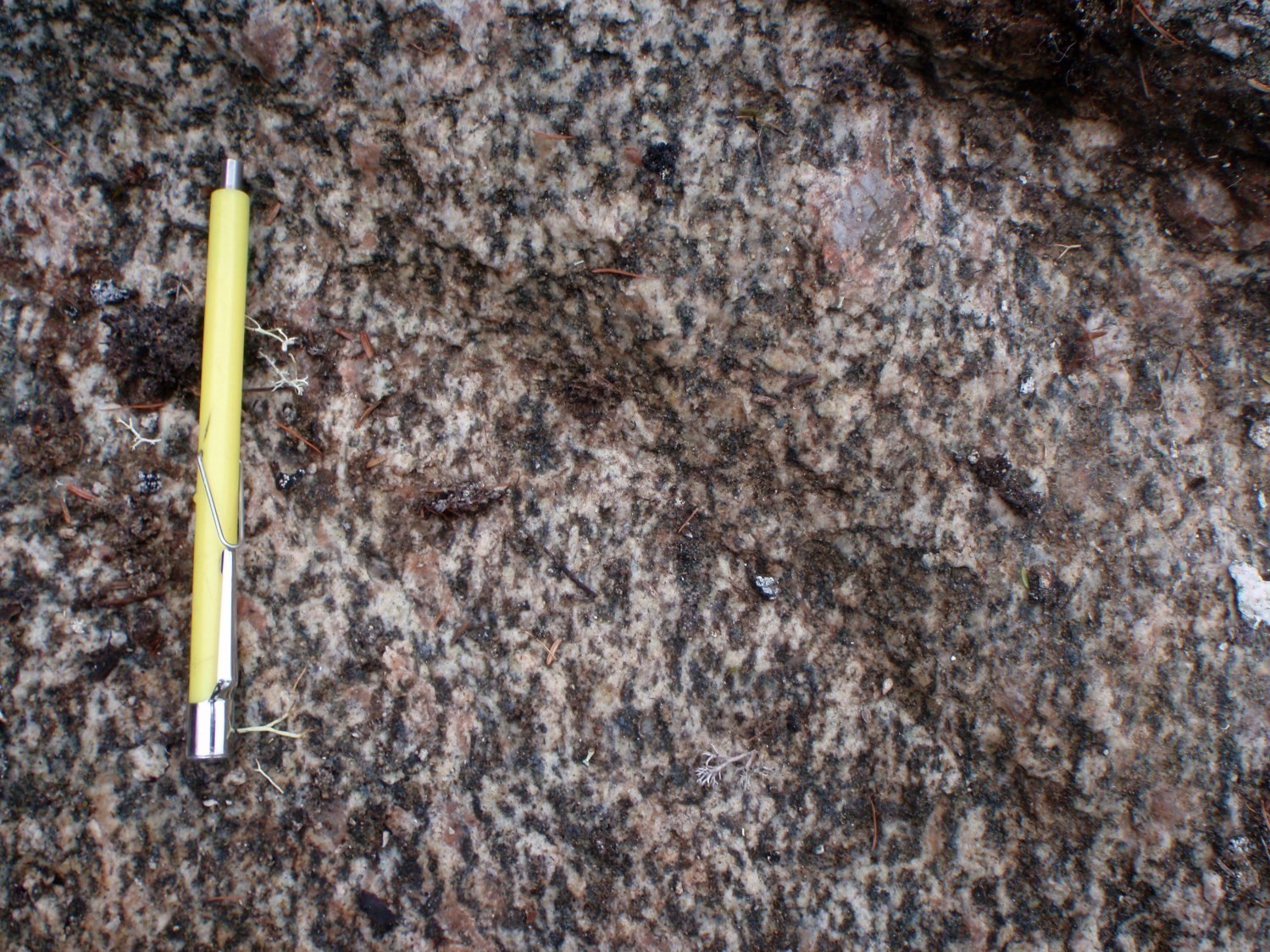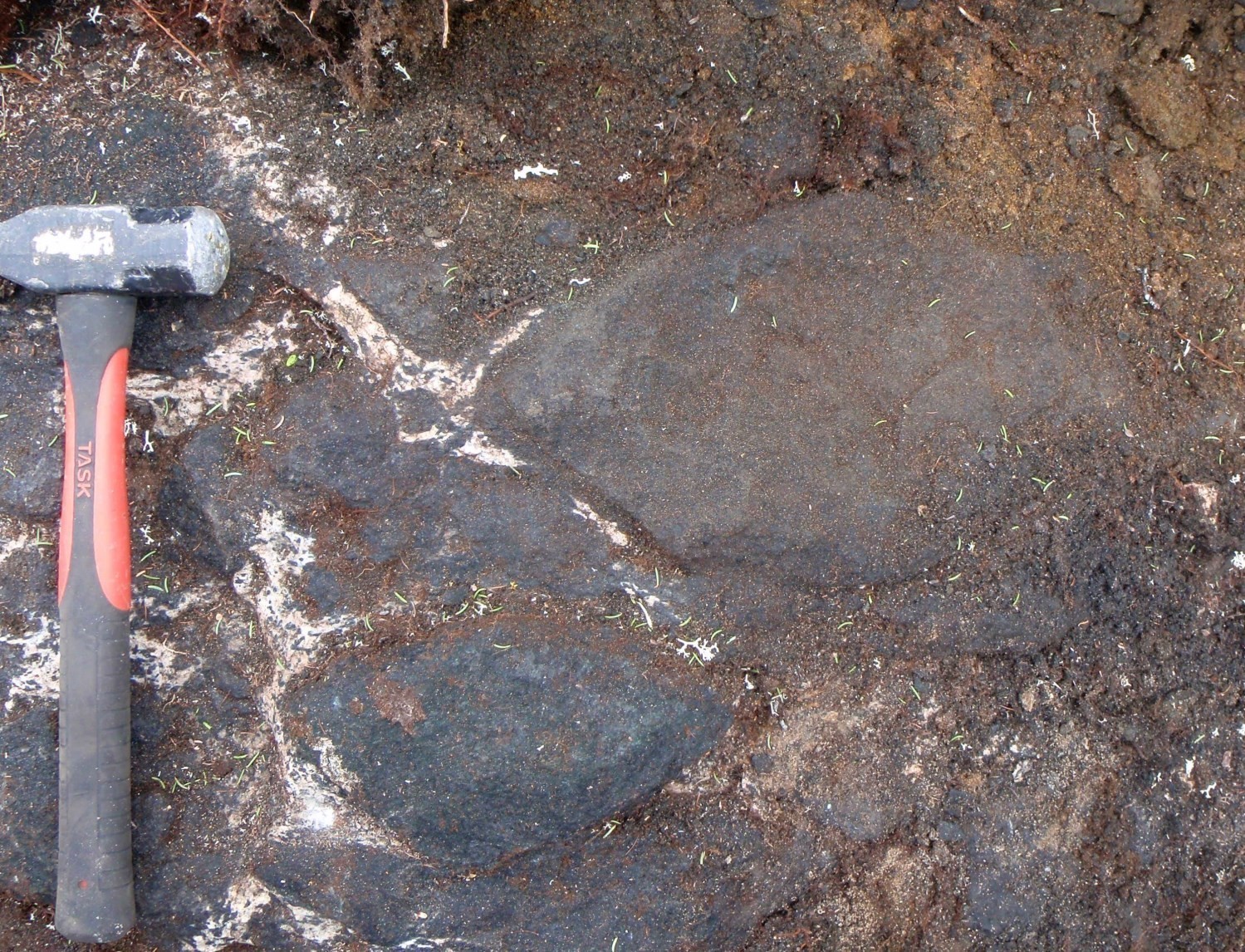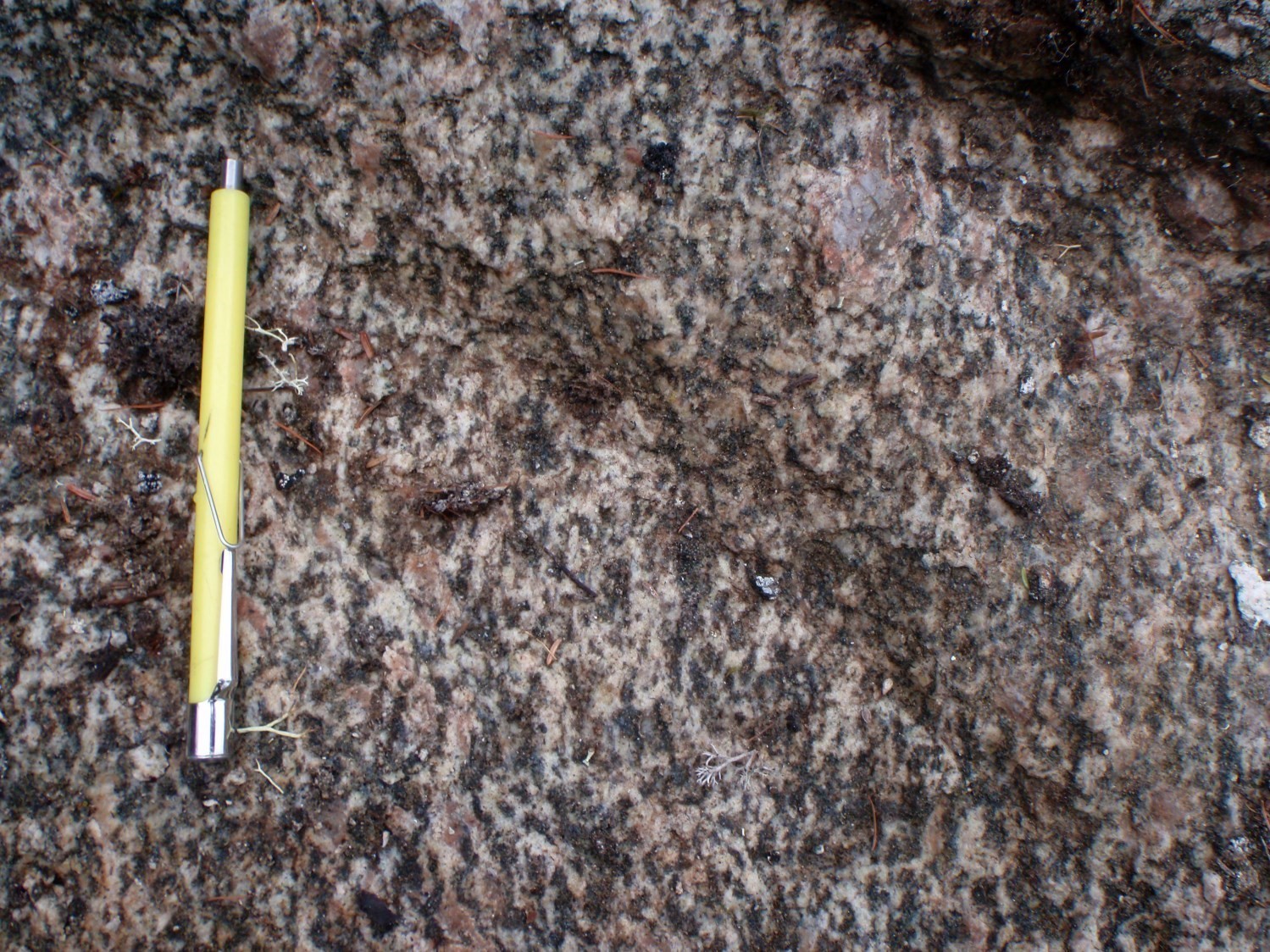
DISCLAIMER: This English version is translated from the original French. In case of any discrepancy, the French version shall prevail.
| Author: | Charette et al., 2016 |
| Age: | Archean; Paleoproterozoic |
| Stratotype: | None |
| Type area: | Jeannin Lake area (NTS sheet 24B) |
| Geological province: | Churchill Province |
| Geological subdivision: | Rachel-Laporte Lithotectonic Domain |
| Lithology: | Monzonite |
| Category: | Lithodemic |
| Rank: | Complex |
| Status: | Formal |
| Use: | Active |
None
Background
The Horseshoe Complex was introduced in the Jeannin Lake area (Charette et al., 2016) to group intermediate intrusions circumscribed to a thrust sheet of the Rachel-Laporte Lithotectonic Domain. Hence, it is a structural complex. A homogeneous and massive granitic to granodioritic gneiss unit, which is locally porphyraceous, was described by Penrose (1978) in the Horseshoe Lake area. Penrose (1978) mentions that these gneiss are similar to those found in remobilized Archean bedrocks.
Description
The Horseshoe Complex consists mainly of monzonite, quartz monzonite and monzodiorite, but there are also some quartz diorite, gabbro and pyroxenite. Intermediate rocks inject mafic and ultramafic rocks that take a local brecciated appearance. The different lithologies are partially recrystallized, moderately to highly magnetic, well foliated and fine to medium grained.
Intermediate rocks have a pink and black (or white and black) mottled appearance. Ferromagnesian minerals (15-25%) form millimetric to centimetric clusters consisting of brown to green biotite and epidote with some hornblende locally. K-feldspar regularly forms recrystallized and stretched clusters (0.5-1 cm) that may be former phenocrystals, although some coarser perthitic microcline crystals are also preserved locally. Quartz forms small anhedral zones consisting of subgrains with undulatory extinction. Rocks are usually altered with partial chloritization of biotite and sericitization, epidotization and hematitization of plagioclase. Accessory minerals are abundant (2-4%) and next to ferromagnesian clusters. They include apatite, sphene, opaque minerals, hematite and allanite (in the core of epidote) as well as, more locally, zircon and carbonate.
Mafic and ultramafic rocks consist of black or dark green amphibolized gabbro and pyroxenite. Gabbro contains ~60% ferromagnesian minerals consisting of hornblende, epidote and chlorite. The rock is fractured and highly altered with injections of millimetric to centimetric magnetite-epidote ± pyrite veinlets. Pyroxenite is composed of a mixture of amphibole (actinolite and tremolite) zones and felts, chlorite and phlogopite. It also includes many opaque mineral grains (magnetite) and clusters of small carbonate crystals.
Thickness and distribution
The Horseshoe Complex is located in the NW portion of the Jeannin Lake area (Charette et al., 2016), where it forms an NW-SE oriented, 18 km-long by 8 km-wide thrust sheet in the Rachel-Laporte Lithotectonic Domain. In the SE extension of this complex, a smaller slice (4 km by 2 km) was also assigned to this unit. It covers an area of ~114 km2.
Dating
Rocks of the Giton Complex have not been dated. However, in the Ungava Bay (Simard et al., 2013) and Saffray Lake (Lafrance et al., 2014) areas, protoliths of gneiss and deformed intrusive rocks that form thrust sheets of the Rachel-Laporte Domain are all Archean (2668-2883 Ma; Lafrance and Vanier, 2021). These various thrust sheets are interpreted as having overthrusted Paleoproterozoic rocks during the New Quebec Orogenesis (1.82-1.77 Ga; Machado et al., 1989).
Stratigraphic Relationship(s)
The Horseshoe Complex consists of Archean rocks circumscribed to a thrust sheet from the Archean basement which would have been emplaced on Paleoproterozoic volcano-sedimentary rocks of the Rachel-Laporte Lithotectonic Domain during the New Quebec Orogenesis. It is therefore in fault contact with volcano-sedimentary rocks of the Laporte Supersuite.
Paleontology
Does not apply.
References
Publications Available Through SIGÉOM Examine
CHARETTE, B., LAFRANCE, I., MATHIEU, G. 2016. Géologie de la région du lac Jeannin, Québec, Canada. MERN. BG 2015-01, 1 plan.
LAFRANCE, I., SIMARD, M., BANDYAYERA, D. 2014. GEOLOGIE DE LA REGION DU LAC SAFFRAY (SNRC 24F, 24G). MRN. RG 2014-02RG 2014-02, 51 pages and 1 plan.
LAFRANCE, I., VANIER, M.-A. 2021. Domaine lithotectonique de Rachel-Laporte, sud-est de la Province de Churchill, Québec, Canada : synthèse de la géologie. Ministère de l’Énergie et des Ressources naturelles. BG 2021-01
PENROSE, B. 1978. GEOLOGIE DE LA REGION DU LAC HORSESHOE (NOUVEAU-QUEBEC). MRN. DPV 573, 39 pages and 1 plan.
SIMARD, M., LAFRANCE, I., HAMMOUCHE, H., LEGOUIX, C. 2013. GEOLOGIE DE LA REGION DE KUUJJUAQ ET DE LA BAIE D’UNGAVA (SNRC 24J, 24K). MRN. RG 2013-04RG 2013-04, 62 pages et 1 plan.
Other Publications
MACHADO, N., GOULET, N., GARIEPY, C. 1989. U-Pb geochronology of reactivated Archean basement and of Hudsonian Trough. Canadian Journal of Earth Sciences, volume 26, pages 1-15. https://doi.org/10.1139/e89-001
Suggested Citation
Ministère de l’Énergie et des Ressources naturelles (MERN). Horseshoe Complex. Quebec Stratigraphic Lexicon. https://gq.mines.gouv.qc.ca/lexique-stratigraphique/province-de-churchill/complexe-de-horseshoe_en/ [accessed on day month year].
Contributors
|
First publication |
Isabelle Lafrance, P. Geo., M.Sc. benoit.charette@mern.gouv.qc.ca (redaction) Marie-Andrée Vézina, P. Geo. (coordination); Thomas Clark, P. Geo., Ph.D. (critical review); Claude Dion, Eng., M.Sc. (editing); Céline Dupuis, P. Geo., Ph.D. (English version); André Tremblay (HTML editing). |



